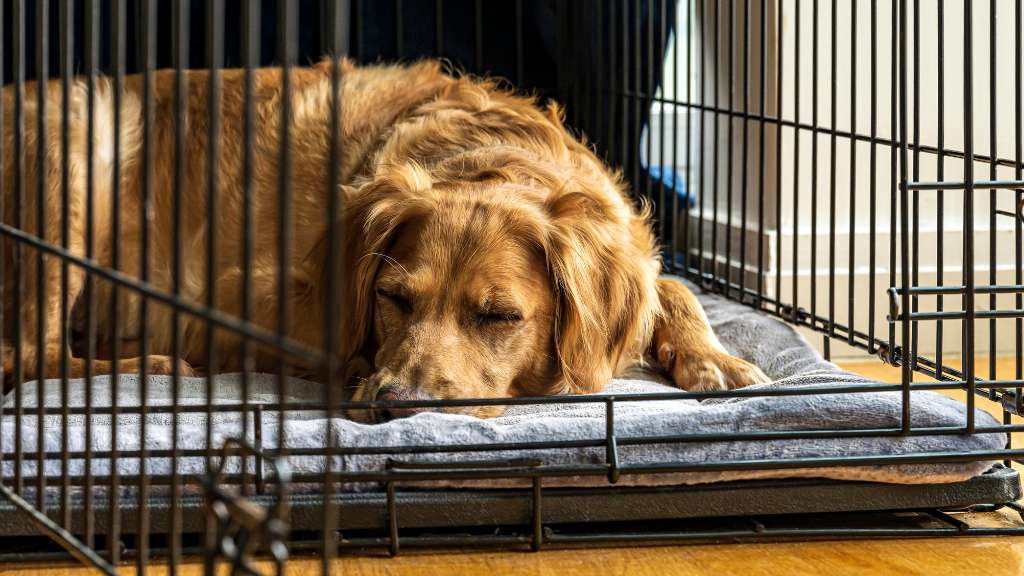Are dog crates right for you and your pet?

Thinking about getting a dog crate but unsure if it’s the right move? You’re not alone. Dog crates can be controversial – some swear by them, while others feel uneasy. This guide will, hopefully, help clear things up. We’ll walk you through the benefits, common pitfalls, and how to decide if a crate is the best choice for your dog.
The benefits of crate training
Crate training can be a game-changer for many whānaus. It can aid in toilet training and offers a safe space for your pet when it’s not ideal for them to roam freely, like when you’re out or hosting guests.
Think of the crate as your pup's personal sanctuary—a place where they can retreat when needing some alone time.
Other benefits include:
- Preventing destructive behaviours such as chewing or house soiling
- Providing a sense of security during travel or in new environments
- Facilitating easier vet visits and grooming sessions by getting your pet used to being in a small space
Is crate training right for every dog?
Crate training can benefit both dogs and their owners, but it isn't a one-size-fits-all solution.
For some dogs, crating is not appropriate. For example, dogs with separation anxiety – a condition where dogs show extreme anxiety and distress when separated from family members – may panic and injure themselves if left in a crate.
Some dogs may have confinement-related trauma or simply dislike being crated. If you're unsure about crate training, observe your dog's behaviour and consult a veterinary behaviourist or behaviourist consultant who can assess your pet and suggest the best approach.
Choosing the right crate
Selecting the right crate for your dog ensures their comfort and safety. Here are some key factors to consider:
- Size: The crate should be big enough for your dog to comfortably stand, turn, and lie down in. Measure your dog from nose to tail base and add a few centimetres for the right size. The bigger, the better.
- Material: Crates can be wire, plastic, or fabric. Wire crates are sturdy with good ventilation, plastic crates offer privacy and are great for travel, and fabric crates are lightweight and portable but less sturdy for a rambunctious pup.
Crate training: A guide
Crate training your dog can be a rewarding process with the right approach and a bit of patience. Here's a guide to get you started:
- Choose a suitable location: Place the crate in a quiet, low-traffic area of your home where your dog can still feel like part of the family.
- Make it comfortable: Line the crate with bedding and toys to make it cosy and inviting for your dog. Some dogs prefer the extra privacy of a crate cover or breathable fabric draped over part of the crate.
- Introduce slowly: Let your dog explore the crate at their own pace, and never force them inside.
- Start with short periods: Start by crating your dog briefly while you're home. Start with the door open first, then closed, then gradually increasing the time as they become more comfortable.
- Keep it positive: Use a positive tone and reward your dog with treats for entering the crate. You can also use food puzzles and other enrichment toys to help your fur friend settle and be content alone in their crate.
Common mistakes with crate training
Crate training can go awry if not approached correctly.
Never force your dog into the crate if they're uncomfortable. Watch for signs of distress like barking and whining and adjust accordingly. The crate should be a positive, not negative, place.
A crate can safely contain your dog for a few hours, but it should not be used for long periods, such as when you’re out at work all day.
Additionally, keep other animals and children out of the crate; it’s your dog's personal space, and respecting that sanctity is key to making it feel safe.
Can I crate a dog every night?
Your dog's crate can double as their nighttime sleeping space but consider their needs.
Ensure they are warm and comfortable. If they are well, you can remove their water a few hours before bedtime to reduce bathroom breaks, but be sure to let them outside before crating. Puppies and older dogs will need an extra break or two through the night.
Place the crate in your bedroom or nearby to provide a sense of security for your dog. This will also help if your dog needs to go outside at night.
Sense of security
In addition to keeping your dog safe at home, you might also want to consider SPCA Pet Insurance to help protect their overall health too. You may choose between three different levels of cover to suit your pet or budget, from everyday essentials to the best of the best.
13 Aug 2024
